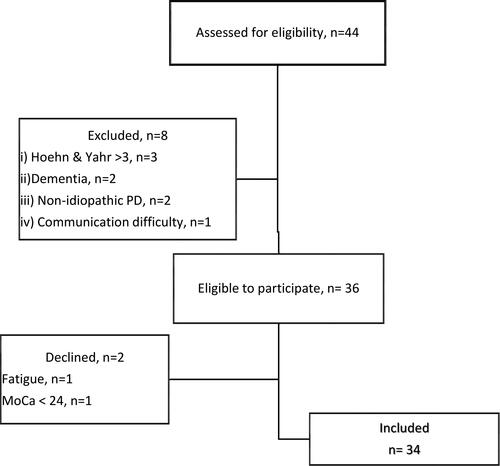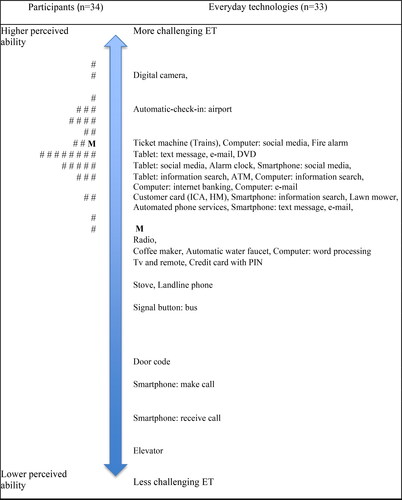Figures & data
Figure 1. Process of inclusion of participants to the study.

Figure 2. The relationship between participants’ perceived ability to use ET and perceived ET challenge. Each # represents one participant. M = Participants’ mean perceived ability measure (56.21) and the mean perceived challenge level measure of the ETs (50.00).

Table 1. Demographic and clinical characteristics of the study sample, n = 34.
Table 2. The ten everyday technologies perceived as most and least relevant.
